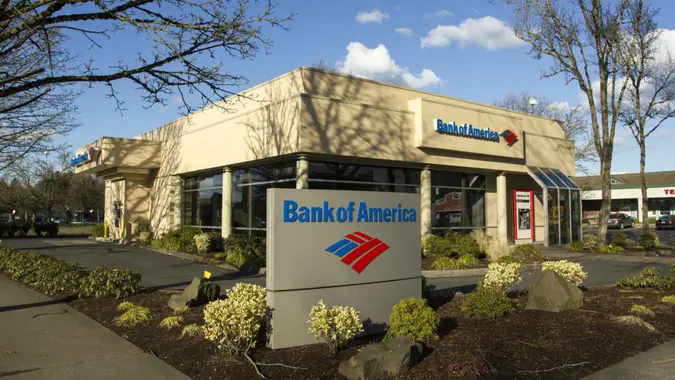Middle Class Faces $22K Lifetime Loss Under New Tariffs, Warns Penn Wharton

Commitment to Our Readers
GOBankingRates' editorial team is committed to bringing you unbiased reviews and information. We use data-driven methodologies to evaluate financial products and services - our reviews and ratings are not influenced by advertisers. You can read more about our editorial guidelines and our products and services review methodology.

20 Years
Helping You Live Richer

Reviewed
by Experts

Trusted by
Millions of Readers
There’s been a lot of talk about how tariffs could push up prices in the short term, but what about the long game? According to the Penn Wharton Budget Model, this policy could cost the average middle-income household $22,000 over a lifetime.
It’s more than just sticker shock at the checkouts. Over time, these import taxes can raise costs, lower wages and slow the economy, hitting ordinary Americans where it hurts.
Here’s what it all adds up to, and why the middle class could lose the most.
Higher Prices, Lower Wages
Tariffs act like a tax on everything the U.S. brings in from other countries, from electronics to clothing to parts used in manufacturing. When those items get taxed, prices rise. Over time, that pushes up the cost of living and puts pressure on wages and job growth.
Even assuming the tariff revenue helps reduce federal debt, the overall impact on the economy is still negative. Penn Wharton estimates that GDP will shrink by 5% and wages will drop nearly 4% over the long term.
A $22K Hit for Middle-Income Households
For a typical middle-class household, the total lifetime cost of these tariffs is about $22,000. That’s based on the reduced wages, smaller investment returns and higher prices that economists expect the tariffs to cause over time.
Even wealthier families lose out, just on a larger scale. For example, a high-earning household in its 30s could lose more than $30,000. Older households closer to retirement could also feel the pinch, especially if they’re holding stock-heavy portfolios. Tariffs make markets more volatile, which drags on investment returns.
Tariffs Are Worse Than a Big Tax Hike
To put this in perspective, Penn Wharton compared the tariffs to a major increase in corporate tax — raising it from 21% to 36%. That’s a huge hike by any measure. Yet the tariffs still cause twice as much economic damage, even though both raise similar revenue.
In short, it’s an expensive way to collect money. The cost is hidden in everyday goods, smaller paychecks and less business investment.
Why It Hits Now
The timing makes this worse. U.S. debt is already rising faster than the economy, which means the country is relying more on borrowing. The Congressional Budget Office estimates that recent tariffs will shave $2.8 trillion off federal deficits over the next decade. Sounds like a win, until you realize total projected deficits still exceed $20 trillion. In the meantime, tariffs shrink the economy and push inflation up.
Investment drops. Prices rise. Returns on savings shrink. And all of it lands, slowly but surely, on the middle class.
What To Watch
This analysis assumes tariffs stay in place without any changes or carveouts. That may not happen, but even temporary tariffs can leave lasting scars, especially if they lead to economic uncertainty. Businesses delay hiring and families delay purchasing, slowing growth.
Tariffs aren’t just about politics. They show up in grocery bills, pay stubs and retirement plans. And for many families, the cost could be higher than expected.
 Written by
Written by  Edited by
Edited by 

























